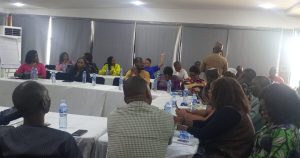The Nigerian insurance industry is undergoing a significant transformation driven by the National Insurance Commission (NAICOM)’s mandate for recapitalization. This initiative, guided by the newly enacted Nigerian Insurance Industry Reform Act 2025 (NIIRA 2025), aims to bolster the financial strength and stability of insurance and reinsurance companies operating within the country. The core objective is to ensure that these companies possess adequate capital to meet their obligations and withstand potential financial shocks, ultimately enhancing policyholder protection and promoting confidence in the insurance sector. A crucial deadline of September 30, 2025, has been set for insurance companies to submit their comprehensive recapitalization plans to NAICOM.
These recapitalization plans, as outlined in the exposure draft of the guidelines, must encompass several key components. Companies are required to provide a board resolution affirming their commitment to complying with the guidelines and existing insurance laws. They must also present a detailed account of their current capital status based on their 2024 audited financial statements and second-quarter returns as of June 30, 2025, measured against the new minimum capital requirements (MCR). Crucially, companies need to articulate a concrete action plan outlining the amount and sources of capital injection, including specific timelines and deliverables. Those seeking funds from the capital market must submit their plans on a file-and-use basis, while companies pursuing mergers or acquisitions are required to submit their proposals for regulatory review. Furthermore, composite companies opting to discontinue specific insurance business categories must submit a portfolio transfer and run-off plan.
To maintain transparency and monitor progress, NAICOM has stipulated that companies submit monthly recapitalization progress reports within five working days of each month’s end. These reports should detail the company’s MCR status, calculated according to the provided template, as well as achieved milestones and ongoing efforts to fulfill their recapitalization plans. Even after achieving the required MCR, companies must continue submitting their recomputed MCR status monthly until a license is issued or otherwise directed by NAICOM. This ongoing reporting ensures continuous regulatory oversight and helps to identify any potential challenges or deviations from the approved plans.
The guidelines also outline a rigorous capital verification process, scheduled to commence on November 1, 2025, for companies that have notified NAICOM of their MCR compliance. This verification involves providing supporting documentation to substantiate the existence, value, title, and ownership of assets deemed admissible for MCR calculation. Companies are also required to submit an actuarial report, prepared by an external actuary, on the valuation of their insurance policy liabilities and funds allocated to meet other obligations as of the end of the relevant quarter. The deadline for completing the capital verification exercise is June 30, 2026, ensuring a comprehensive assessment of each company’s capital adequacy.
A series of critical deadlines punctuate the recapitalization process. All directives stemming from the capital verification exercise must be complied with by June 30, 2026. Evidence of statutory deposit payment to the Central Bank of Nigeria must be submitted by May 30, 2026. The final compliance date for the entire recapitalization process is set for July 2026. This structured timeline provides a clear roadmap for companies to navigate the process and ensures that the recapitalization objectives are achieved within the stipulated timeframe.
The calculation of MCR for existing companies, as defined in Section 15(5) of NIIRA 2025, is the excess of admissible assets over liabilities, minus any own shares held by the insurer. Admissible assets encompass a range of financial instruments, including cash, bank balances, tenured deposits, government bonds, treasury bills, corporate bonds, commercial papers, quoted equities, loans to policyholders and agents, reinsurance assets, premium receivables (certified by external auditors), investment properties (capped at 20% of MCR and valued at the lower of cost or fair value), and statutory deposits. The new minimum capital requirements under NIIRA 2025 are set at N10 billion for life insurance firms, N15 billion for non-life insurance firms, and N35 billion for reinsurance companies. This significant increase in capital requirements is designed to fortify the industry’s financial resilience and ensure its long-term sustainability.













